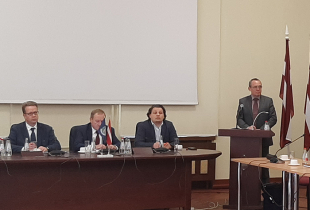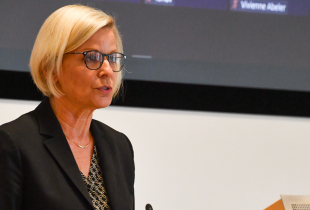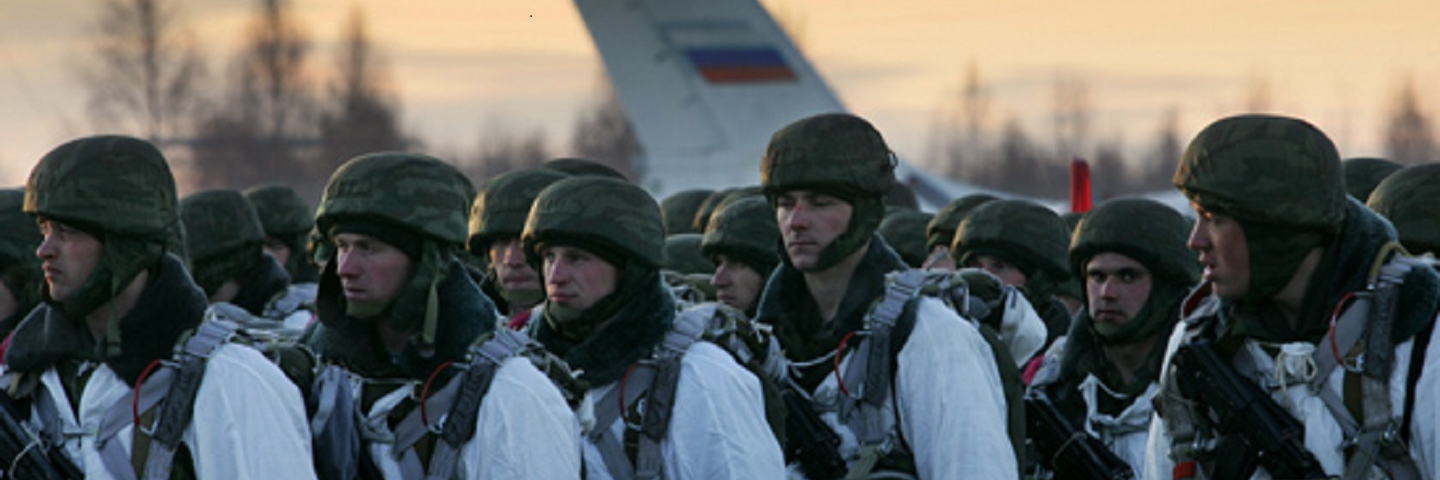
Russian Strategic Decision-Making in a Nordic Crisis
Executive Summary
- This policy brief examines how Russian strategic culture operates in the distinct geographic and geopolitical environment of the Nordic region. This analysis is based on a model of Russian decision-making in crisis situations that describes Russian leaders as prospect theory players who take greater risks to prevent anticipated defeats than they do to pursue potential opportunities. They seek to prevent foreign policy defeats that could translate into a loss of power in the region, a loss of great power status, or, in some cases, political defeats at home.
- Russia’s strategic objectives in the Nordic region are thus focused primarily on maintaining the status quo rather than changing the strategic environment or expanding Russian influence in a significant way. The primary objective is simply to maintain Russian influence in the region. Russia is also working to prevent the formal admission of Sweden and Finland to the North Atlantic Treaty Organization (NATO) and to deter Sweden and Finland from joining NATO in fighting against Russia in the event of a conflict.
- We can expect Russia to act cautiously in the Nordic region because it is not facing a loss situation. Russian leaders will tend to pursue their goals through nonmilitary means and will be careful to avoid unintended escalation. The one exception to their preference for non-escalation would occur in the event of an attack on Russian territory, which would create a loss situation for Russia and therefore allow for a robust defense and/or counterattack.
Introduction
This policy brief, the second in a series that addresses how Russian strategic culture can explain Russian foreign policy behavior, examines how Russian strategic culture operates in the distinct geographic and geopolitical environment of the Nordic region. The Nordic region is presented as a case study to generate conclusions with regard to the drivers of Russian strategic behavior, especially the factors that incentivize or constrain risk-taking.
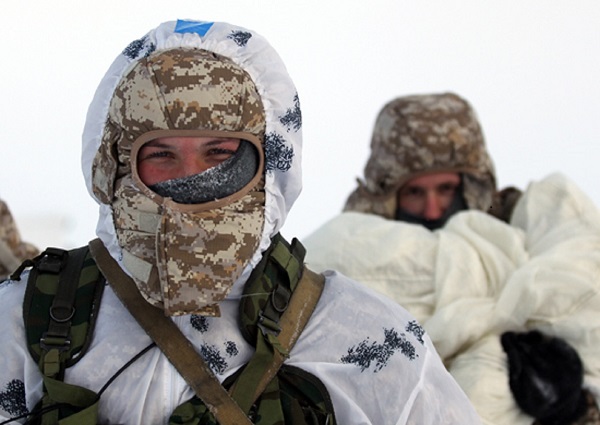
Overview of Russian Strategic Decision-Making
This analysis is based on a model of crisis decision-making developed by the Russian analysis team at CNA.1 As an abbreviated version of this model has already been presented in a previous article in this series, what follows is a brief summary.2 The model presents Russia as a prospect theory player on the international scene that takes greater risks to prevent anticipated defeats than it does to pursue potential opportunities.3
Russian strategic objectives are rooted in and derived from the following three principal Russian foreign policy motivations:
- Maximizing security, which results in the pursuit of extended defense and has been the main driver for Russian aggression in its near abroad and Russia’s military modernization at home.
- Russia’s desire for a privileged sphere of influence as an effort to achieve regional hegemony based on the goal of maximizing its overall power.
- Maintaining great power status in the international system by ending U.S. primacy and thereby upending the uni-polar nature of power distribution in the international system in favor of a multi-polar one. However, this motivation does not necessarily mean that Russia wants to challenge the United States directly, given the power disparity.
Russian leaders prefer to achieve their political goals through coercion and threats of violence, rather than actual violence. Russian strategy in a conflict seeks to establish escalation dominance over potential adversaries by convincing them that Russia is able and willing to use force in pursuit of its objectives. When pressed to use force, Russia tends to use the minimum amount of force required to achieve its objectives in order to minimize losses and costs. This approach also allows Russia to maintain the threat of bringing in additional force if the adversary does not accept Russian objectives. Russia is happy to use force multipliers, such as local militias and mercenaries, to absorb the bulk of combat losses. Ambiguity is used to maintain plausible deniability and thereby slow adversary decision-making. Finally, Russia seeks to deter external actors from interfering in a conflict in order to prevent escalation.
Russia’s Strategic Assessment of the Nordic Region
Russia’s strategic calculus suggests that in the event of a crisis in the Nordic region, Russia will focus on the geographic and political environment in the region in determining its strategic objectives and minimum and maximum goals for the situation.
The geography of the Baltic Sea would play a particularly important role in Russia’s assessment of a potential maritime conflict scenario. The geography of the Baltic Sea in many ways mirrors that of the Black Sea, except that the geography favors NATO and its partners, rather than Russia. Like the Black Sea, the Baltic Sea is enclosed, with passage restricted by the Danish Straits. Although the Oresund and Fehmarn Belt are considered international straits, as governed by the Copenhagen Convention of 1857, they could easily be closed by NATO forces in the event of a conflict, effectively preventing Russia from bringing naval reinforcements to the Baltic Sea from the Northern Fleet or the Mediterranean. In addition, a series of islands can provide effective control over the sea itself. Bornholm (controlled by Denmark), Gotland (Sweden) and the Aland Islands (Finland), can be used to control the sea lanes in the Baltic Sea as well as the entrance to the Gulf of Bothnia. These islands thus can play the same role in the Baltic as Crimea does in the Black Sea. Furthermore, Estonia and Finland effectively control entrance to the Gulf of Finland and therefore to St. Petersburg.
Although Western analysts often paint Russia’s Kaliningrad enclave as a militarized territory that threatens the security of the NATO member states in the region, Russian planners view the region as a vulnerable outpost surrounded by potentially well-armed NATO states. As a result of these factors, Russia feels that the region’s geography is relatively negatively set up for Russian forces to act in the event of a conflict with NATO and its partners.
Russia’s political assessment also emphasizes the potential challenges of a military conflict in the region. Although Sweden and Finland are ostensibly neutral, Russian leaders fully expect them to be involved on the side of NATO in any conflict between NATO and Russia. They point to statements that the two countries have made, such as the European Union (EU) solidarity clause and the EU Permanent Structured Cooperation (PESCO) effort joined by Sweden and Finland in 2017, which strongly imply such a scenario.4 They also note that the two countries have been strengthening their military forces in recent years and have increasingly integrated these forces with NATO. Both Sweden and Finland have increased their frequency of participation in NATO exercises. These developments are seen in Russia as clear signals that neither country will stay out of the fight in the event of a conflict.5
On the other side, Swedish planners fear that Russia might preemptively attack Gotland in a conflict in order to take control of the middle section of the Baltic Sea. They have responded by placing troops on the island for the first time in over a decade. Although the force is only the size of a regiment, it is meant as a symbol of Swedish intent in combination with the reintroduction of military conscription. Russia has decried this move as a step toward the further militarization of the region.6
Finland’s history of relations with Russia makes its leaders cautious about exacerbating tensions with Moscow. They point to their losses in previous wars with the Soviet Union in the 1930s and 1940s, which resulted in the policy of “Finlandization” that effectively meant that Finland did not have full control over its foreign policy orientation until the end of the Cold War, a period of over 40 years. As a result, Finnish leaders have generally avoided hostile rhetoric against Russia while retaining more contacts with Moscow than other countries in the region.7 Furthermore, most of the Finnish population remains opposed to their country joining NATO. Although Finland has supported EU sanctions against Russia in the aftermath of the Ukraine crisis, it has retained significant trade relations and has a sizeable expatriate Russian population in Helsinki.8 Russia has proved adept at using trade links and expatriate Russian populations in other European countries to undermine anti-Russian policies. Similar tactics could be used in the Nordic region.
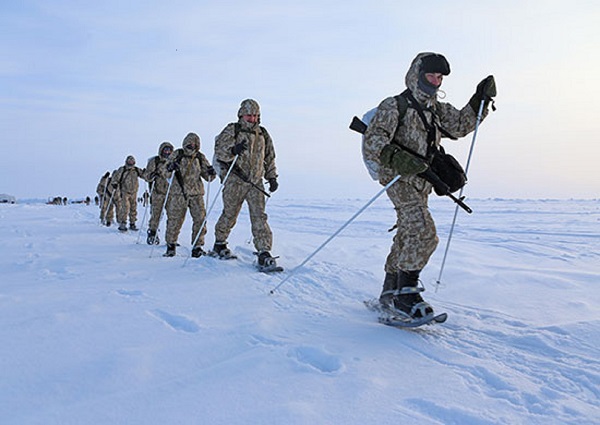
Russia’s Strategic Objectives
Russia’s strategic objectives in the Nordic region are thus focused primarily on maintaining the status quo rather than changing the strategic environment or expanding Russian influence in a significant way. The primary objective is simply to maintain Russian influence in the region. To this end, Russia has undertaken a propaganda effort to show the citizens of these countries that Russia does not threaten them.9 Russia has pursued political influence operations to prevent the growth of negative political attitudes toward Russia. To this end, there are concerns that it has used the Russian expatriate population and other pro-Russian activists in the region, especially in Finland, as a supportive element.10 It has also provided support to political parties and societal organizations critical of the EU and especially of NATO as a way of limiting the trend toward closer cooperation between NATO and the two nonmember Nordic states. Russia has also sought to maintain and enhance economic linkages with Nordic states, most notably through the strategic use of its role as an energy supplier to Finland. It is estimated that forty percent of Finland’s energy comes from Russia, and Russia has taken steps in recent years to make the import of electricity cheaper for Finland in order to maintain that connection.
In regard to military issues, Russia has worked to prevent the formal admission of Sweden and Finland to NATO. To this end, it has used a classic carrot-and-stick approach. Russian media has highlighted popular opposition to NATO membership within these countries, noting the likelihood of negative political consequences for any government that chooses to pursue NATO membership.11 Russian officials have threatened political, economic, and military consequences for Sweden and Finland should they choose to formally join NATO.12 The implicit threat is that not only would cheap energy supplies end and trade be negatively affected, but Russia could use tactics it has pursued elsewhere, such as cyberattacks and funding of antigovernment groups, to undermine political stability in these countries.13 Russian media have also suggested the possibility that Russia might offer inducements to Sweden and Finland for remaining neutral or at least not joining NATO formally.
In the event of a regional crisis, Russian leaders would seek to deter Sweden and Finland from joining NATO in fighting against Russia. They would seek to preempt the threat by neutralizing Nordic militaries through a Russian military buildup in the region combined with the threat that Russia would target these countries’ territories should fighting break out. Russia’s minimum goal in a Nordic crisis is thus to maintain and exacerbate existing divisions in the Nordic states that prevent them from seeking to join NATO and to inhibit further integration of their military forces with NATO forces short of membership. Russia’s maximum goal is to reverse the existing close integration of the military forces of the Nordic states with those of the United States and NATO and ideally, to have these states recommit to neutrality in deed as well as in word.
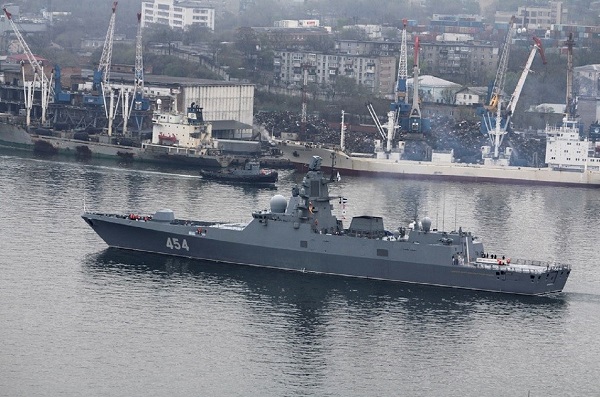
Russia’s Vulnerabilities
Russia’s vulnerabilities in a Nordic crisis are to a large extent the same as its vulnerabilities in other regions, though there are some aspects particular to this region. The Russian military has relatively few forces in northwestern Russia because its main focus in recent years has been on securing the Caucasus, reinforcing its border with Ukraine, and building up forces in the Arctic and the Far North. Russian forces in northwestern Russia are not equipped for a short-notice conventional conflict, with relatively few mechanized units and a command structure not set up to fight a war in this region.14 As noted above, the geography of the region makes a maritime conflict relatively complicated for Russia, though that disadvantage may be mitigated in a broader engagement due to the Nordic region’s proximity to Russia and the relatively long border with Finland.
Russia is hampered by its lack of allies in the European theater. Although Belarus is a member of the Collective Security Treaty Organization (CSTO) and a Russian military partner, it would be unlikely to actively participate in a Russian military campaign. It might, however, reluctantly allow Russia to use its territory as a staging area in a conflict with NATO. Recent political tensions about the extent to which Belarus can be expected to integrate with Russia have highlighted the limits of the relationship between Moscow and Minsk. Other allies are even less likely to get involved. Neither Russia’s other CSTO allies nor China will want to get involved in a fight with NATO and (with the exception of China) would not be able to contribute significantly to the effort.
As with any conflict with a powerful but distant adversary, Russian leaders would be concerned that the overall force balance between Russia and NATO would become highly unfavorable in a longer-term conflict. For this reason, they would want to keep the conflict short and ensure that any conflict in the region would not result in horizontal escalation, which could expose Russian territory to defeat by the much larger and stronger U.S. military in a regional or even global conflict. They would be particularly concerned about the possibility that the conflict could spread to other theaters, especially the Mediterranean, which would cause Russia’s forces to be stretched thin in a fight on multiple fronts.
Finally, Russian leaders may be concerned about the impact of any kind of extended or costly intervention on Russian domestic politics. They will want to make sure that they avoid costly and long-lasting entanglements that might result in the Russian public turning against the intervention. Such a situation would be especially likely if Western states pursued strong economic countermeasures that had a direct negative effect on the Russian economy or on Russians’ ability to travel to Europe. In particular, this scenario would be a problem in a conflict that the Russian public might see as a war of choice rather than of necessity, especially one that becomes costly in either financial or human terms. For this reason, Russian leaders will seek to avoid both defeat and long-term entanglement in a Nordic conflict, as these circumstances would increase the likelihood of a strong negative effect at the domestic level.
Red Lines and (De-)Escalation Drivers
As in the Baltics, Russian leaders would view a crisis in the Nordic region primarily as a potential opportunity to realize strategic gains rather than as a threat to Russia’s vital interests. As a result, they would consider the stakes to be relatively low in most situations. This assessment would lead to a strategy of managing the crisis carefully in order to keep costs low and avoid triggering a vigorous response by NATO. Although it is important for Russia to keep Sweden and Finland out of NATO, Russia would not be likely to mount a military response if the two Nordic states take steps toward that goal. Concerns about the vulnerabilities described above, especially the danger of horizontal escalation to other theaters and the risk of loss of popularity at home due to high casualties or serious financial impact from a conflict, would encourage Russian leaders to de-escalate hostilities in the event of a crisis in the Nordic region.
The one exception to this calculus would occur in the event of a NATO attack on Russian territory. Such an attack would lead to escalation as it would pose a direct threat to the homeland and regime survival while uniting the Russian population in defense of their homeland. The Russian people have shown repeatedly that they are far more likely to accept sacrifices to defend the country than to engage in a war of choice, so Russia should be expected to escalate any conflict where control of its own territory is at stake.
Conclusion
Russia’s main peacetime goals in the Nordic region involve preventing further military integration of the Nordic states with NATO. The primary means to carry out these goals are political and cyber in nature, rather than military. In a conflict, Russia’s main goals would be similar: to keep the Nordic states out of any conflict with NATO or to keep NATO out of any conflict with a Nordic state. Escalation poses serious risks to Russia, so Russian leaders would be unlikely to initiate a conflict in the region. Russia would be much more willing to defend itself if threatened or attacked but otherwise would limit itself to using indirect means to weaken the Nordic states and to undermine their unity with their NATO partners.
For Academic Citation
Dmitry Gorenburg, “Russian Strategic Decision-Making in a Nordic Crisis,” Marshall Center Security Insight, no. 37, July 2019, https://www.marshallcenter.org/en/
publications/security-insights/russian-strategic-decision-making-nordic-crisis-0.
Notes
1 A full elaboration of this model may be found in Dmitry Gorenburg, Michael Kofman, Paul Schwartz, and Samuel Bendett, “Analytic Framework for Emulating Russian Decision-Making,” CNA Research Memorandum, June 2017.
2 Dmitry Gorenburg, “Russian Strategic Culture in a Baltic Crisis,” Garmisch-Partenkirchen, Germany: George C. Marshall European Center for Security Studies, March 2019.
3 Prospect theory was developed and refined by Daniel Kahneman and Amos Tversky through a series of articles. See Daniel Kahneman and Amos Tversky, “Prospect Theory: An Analysis of Decision Under Risk,” Econometrica 47, no. 2 (March 1979), and Amos Tversky and Daniel Kahneman. “Advances in Prospect Theory: Cumulative Representation of Uncertainty,” Journal of Risk and Uncertainty 5, no. 4 (October 1992).
4 Sara Myrdal and Mark Rhinard, The European Union’s Solidarity Clause: Empty Letter or Effective Tool? Occasional Paper (Stockholm: Swedish Institute for International Affairs, 2010), https://www.ui.se/globalassets/ui.se-eng/publications/ui-publications/the-european-unions-solidarity-clause-empty-letter-or-effective-tool-min.pdf; Government of Sweden, “EU’s Ministers for Defence and Foreign Affairs Discussed Permanent Structured Cooperation,” November 14, 2017, https://www.government.se/press-releases/2017/11/eus-ministers-for-defence-and-foreign-affairs-discussed-permanent-structured-cooperation.
5 Christopher Woody, “NATO’s biggest military exercise in years just started, but Russia may be more worried about 2 countries that aren’t members of the alliance,” Business Insider, October 25, 2018, https://www.businessinsider.com/as-natos-big-war-games-begin-russia-is-worried-about-sweden-finland-2018-10.
6 Agence France Presse, “Amid worries over Russia, Sweden returns troops to Baltic Island,” April 17, 2019, https://www.france24.com/en/20190417-amid-worries-over-russia-sweden-returns-troops-baltic-island; “‘Historic Moment’ as Sweden Remilitarizes Its Largest Baltic Island,” Sputnik International, May 22, 2018, https://sputniknews.com/military/201805221064671986-sweden-gotland-defense.
7 Mackenzie Weinger, “What Finland Can Teach the West About Countering Russia’s Hybrid Threats,” World Politics Review, February 13, 2018, https://www.worldpoliticsreview.com/articles/24178/what-finland-can-teach-the-west-about-countering-russia-s-hybrid-threats.
8 Atle Staalesen, “After years of decline comes solid upswing in Finnish-Russian trade,” Barents Observer, February 7, 2018, https://thebarentsobserver.com/en/industry-and-energy/2018/02/after-years-decline-comes-solid-upswing-finnish-russian-trade.
9 “How Finland became a battleground in the Russia-NATO information war,” Russia Beyond the Headlines, June 10, 2016, https://www.rbth.com/international/2016/06/10/how-finland-became-a-battleground-in-the-russia-nato-information-war_602129.
10 Anna Nemtsova, “Finland and the Bear,” Foreign Policy, July 31, 2018, https://foreignpolicy.com/2018/07/31/finland-and-the-bear-russia-putin-trump-finns-helsinki.
11 Aleksandr Lenin, “Финляндия допустила вступление в НАТО,” Rossiiskaia Gazeta, April 4, 2019, https://rg.ru/2019/04/04/finliandiia-dopustila-vstuplenie-v-nato.html; Jorge Benitez, “The Bully to the East,” U.S. News and World Report, August 6, 2015, https://www.usnews.com/opinion/blogs/world-report/2015/08/06/russia-bullies-sweden-and-finland-away-from-joining-nato.
12 Jason Lemon, “Russian Defense Minister Threatens Response If Sweden and Finland Join NATO,” Newsweek, July 24, 2018, https://www.newsweek.com/russian-defense-minister-threatens-response-if-sweden-finland-join-nato-1040806.
13 Gerard O’Dwyer, “Russia promises ‘countermeasures’ if Finland joins NATO,” Defense News, October 13, 2017, https://www.defensenews.com/global/europe/2017/10/13/russia-promises-countermeasures-if-finland-joins-nato.
14 Catherine Harris and Frederick W. Kagan, Russia’s Military Posture: Ground Forces Order of Battle (Washington, D.C.: Institute for the Study of War, March 2018), 12–14, http://www.understandingwar.org/sites/default/files/Russian%20Ground%20Forces%20OOB_ISW%20CTP_0.pdf.
About the Author
Dr. Dmitry Gorenburg is a Senior Research Scientist at CNA, where he writes on security issues in the former Soviet Union, Russian military reform, Russian foreign policy, and ethnic politics and identity. His recent research topics include decision-making processes in the senior Russian leadership, Russian naval strategy in the Pacific and the Black Sea, and Russian maritime defense doctrine. In addition to his role at CNA, he currently serves as editor of Problems of Post-Communism and is an Associate of the Davis Center for Russian and Eurasian Studies at Harvard University.
Russia Strategic Initiative (RSI)
This program of research, led by the GCMC and funded by RSI (U.S. Department of Defense effort to enhance understanding of the Russian way of war in order to inform strategy and planning), employs in-depth case studies to better understand Russian strategic behavior in order to mitigate miscalculation in relations.
The Marshall Center Security Insights
The George C. Marshall European Center for Security Studies in Garmisch-Partenkirchen, Germany, a German-American partnership, is committed to creating and enhancing worldwide networks to address global and regional security challenges. The Marshall Center offers fifteen resident programs designed to promote peaceful, whole of government approaches to address today’s most pressing security challenges. Since its creation in 1992, the Marshall Center’s alumni network has grown to include over 13,985 professionals from 157 countries. More information on the Marshall Center can be found online at www.marshallcenter.org.
The articles in the Security Insights series reflect the views of the authors and are not necessarily the official policy of the United States, Germany, or any other governments.
